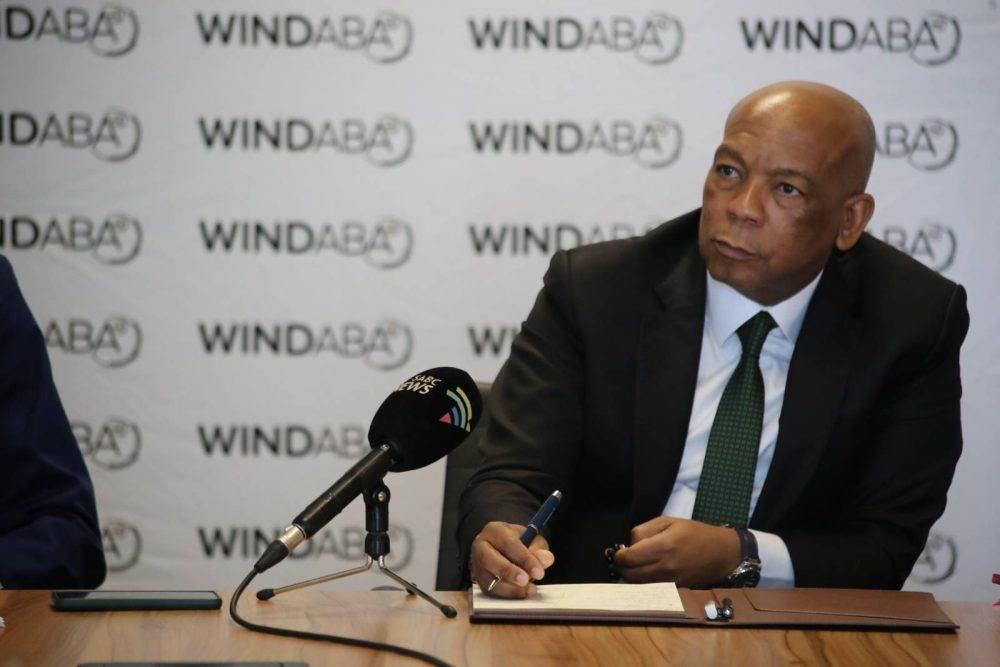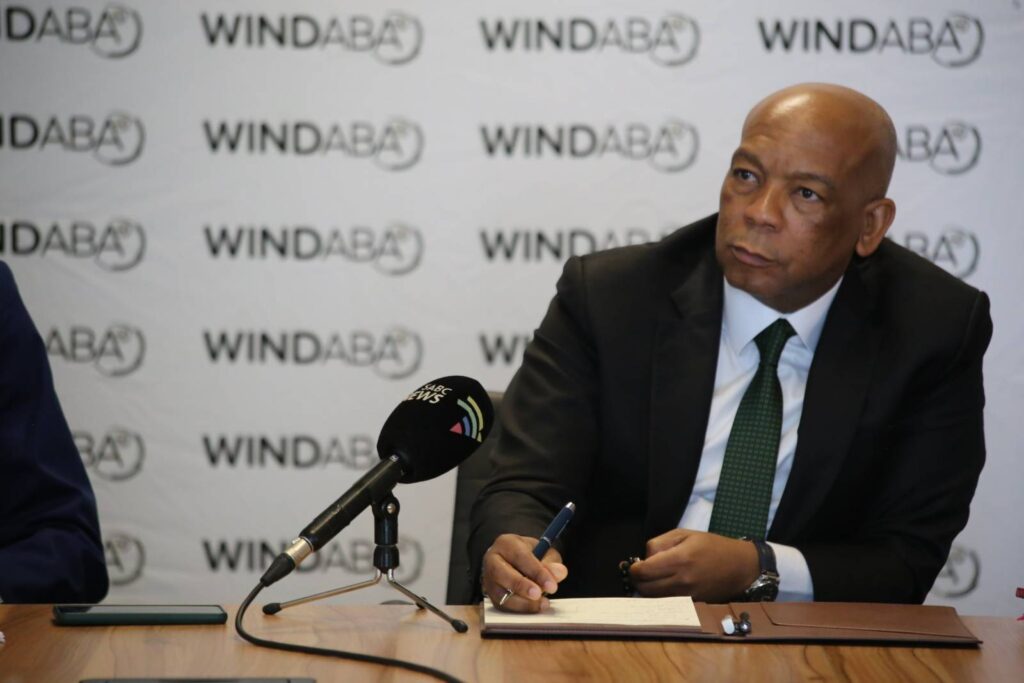
Minister of Power and Energy Kgosiensho Ramokopa attended the Windaba Conference in Cape Town. (Photo: X)
Minister of Power and Energy Kgosiensho Ramokgopa aims to “de-risk energy generation” and install multiple power plants in South Africa.
Ramokgopa made the remarks on Monday while presenting an update on the Independent Power Producer Procurement Program (IPPPP).
He said the program, which began in 2011, was a disciplined way for the government to “open up to the public” through a transparent competitive bidding process to procure cleaner forms of electricity generation.
For Ramokgopa, Monday's briefing signaled a key moment, as he is “reversing direction” from solely “focusing primarily on the performance of the grid by Eskom”.
Instead, the aim was to update South Africans on other efforts underway to create conditions for energy sovereignty.
“We are ensuring that we have the best mix of fuel sources to power our economy, but at the same time we are trying to show the country that we are committed to making sure we take advantage of the reforms on the power generation side.” …and also to demonstrate that we are doing everything possible to achieve our nationally determined contribution. [NDCs]” he said.
The NDC is a set of voluntary targets that countries set for themselves to “green the economy” and ensure commitment to reducing greenhouse gas emissions.
The minister said it is important that the country upholds its commitments to the international community and its people.
“We recognize that the relationship between the issue of climate change and greenhouse gas emissions is established by a wealth of science; we know that [climate change] It is destroying large parts of the country.
“KwaZulu-Natal is exposed to extreme weather. We've seen this in parts of the Western Cape, parts of the North West and really across the length and breadth of the country. Greenhouse gas emissions It is our collective responsibility to ensure that this is reduced and transitioned,” Ramokgopa said.
For the country to achieve the goals it has set for itself, it will need to “accelerate the adoption of renewable energy” as part of the total energy mix.
He said Eskom continued to record performance that would lead to the country's economic recovery.
“It would be unusual for us to celebrate the fact that we have had no shedding for 208 days. We want to get to the point where we are not counting the days without shedding. This is because the load cannot be reduced.
Regarding the IPPPP program, the Minister said that since its inception there have been nine tender cycles with “pioneering transformations” developed through its Secretariat.
“We think there are great opportunities for the future… Under the seventh government, the Energy and Power sector will accelerate this procurement program. We want to be proactive. ,” Ramokgopa said.
Of the nine bid slots, 141 preferred bidders were appointed, totaling 13,422 megawatts.
“While this is important, it does not necessarily mean that all of it is operational. In fact, of this figure, 7 335MW from 95 projects are operational.”
The minister said 1,897 MW is under construction in 17 projects, while 1,183 MW in nine projects is gearing up for commercial and financial completion.
There is currently 8 231MW of capacity on the market, which will be evaluated between now and next year. “We can see this program getting stronger,” he said.
Still not enough. “We need to increase this, and what that multiplier is is something we are talking about with the IPP office and all the players in the ecosystem.
“One of the things we accomplished in the first few days of the seventh administration was to use our convening powers to get everyone in this space together in one room to criticize the nine bid slots and to We were able to consider how best the bid framework would be, contributing to a very efficient and seamless procurement of renewable energy procurement programs,” Ramokgopa said.
He said R272.5 billion of investment had been raised from renewable energy projects that had reached settlement on all tenders, of which R50.3 billion came from foreign investors. This has been made possible by growth potential, program transparency and government support.
The minister expressed confidence that within the next four to five weeks “we will be able to bring the reforms that we introduce to the market with some certainty.” [and] These are improvements we are making to ensure we can accelerate this program.
“This is important because, as part of our decarbonization ambitions, we believe we will contribute to a reduction of 350 million to 420 million tonnes of CO2-eq per year into the future. Because it has been communicated to many countries…
“We need to accelerate this so we can reduce the risk of energy generation from monopolies like Eskom and have multiple power plants in the country. We have seen the downsides of monopolies. If the monopoly fails, the whole country will be caught up in it.
Ramokgopa said around 8,250MW of the project is in operation or under construction, and geographical maps reveal that the Cape provinces of the Northern, Western and Eastern Capes are experiencing “oversupply. “This is happening,” he said.
That's because “the best renewable energy sources are found there. Radiation levels in the Northern Cape are exceptionally better than elsewhere in the country. Both wind speeds and efficiency This shows that investment is concentrated in these regions.”
Most projects are there, he added, but “we know there is capacity in other parts of South Africa”. The IPPPP program is “committed to the next generation of battery storage” that will help maximize the benefits of renewable energy.
“The key feature we observed when we started looking at solar power was that a kilowatt-hour costs about R4.66, which currently costs 56 cents per kilowatt-hour, so that’s an 88% decrease over this period. That will happen.”
For wind power, the first generation bid was around R1.93 per kilowatt-hour, but now stands at 58 cents per kilowatt-hour.
This is important because beyond greening power generation, it will lead to cheaper electricity over time.
“Effectiveness and efficiency are clear from our own experience in South Africa. We draw on other international experiences and of course combine this with battery storage. I think we can extract value from it.”
Ramokgopa said he “recognizes the technical limitations” of the technology, including its undispatchable nature and intermittent nature.
“But as a country, we have been able to show that it is possible with a transparent and competitive procurement process.
“Price is coming down.This time we will introduce batteries. [storage]. We are de-risking generation from Eskom and finding new sources of generation, and we hope that in the long term the benefits will trickle down to end consumers. ”

